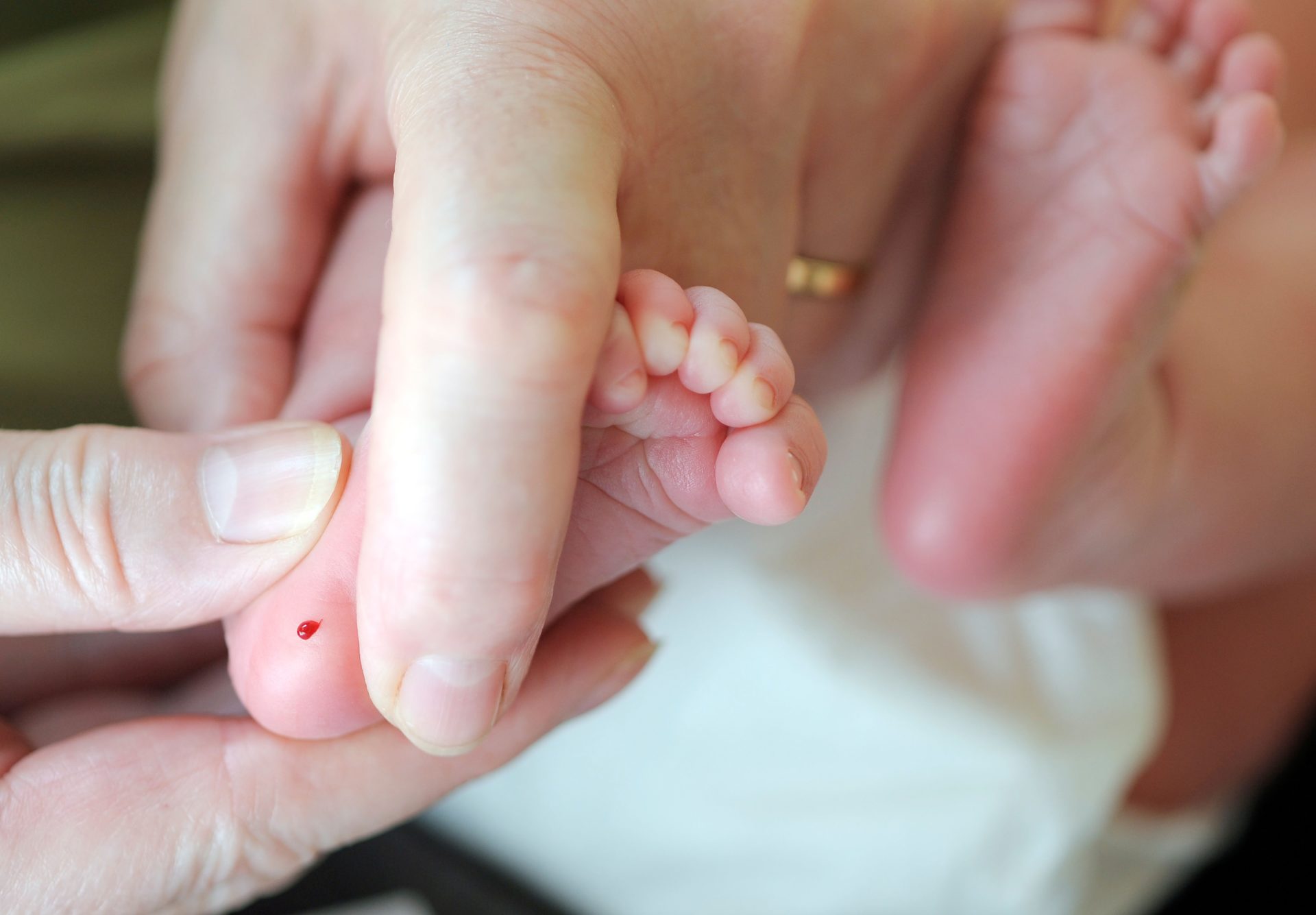The mother of a child born with Spinal Muscular Atrophy says her child would probably be running around with his friends if a simple early test was standard for all new babies in Ireland.
It comes after a Temple Street Hospital consultant called for the condition to be added to heel prick testing for newborn babies.
Each year in Ireland, six babies are born with the condition known as SMA.
This degenerative condition means that most affected will never walk, and left untreated, 95% of children with the most severe form do not live past 24 months.
 A heel prick test on a newborn baby. Picture by: crozstudios / Alamy Stock Photo
A heel prick test on a newborn baby. Picture by: crozstudios / Alamy Stock PhotoTemple Street Hospital Consultant Paediatric Neurologist Professor Declan O'Rourke says early testing for the condition could prevent children experiencing "nearly all of the disease's features".
Bróna Noonan is mother of Donnacha, who has SMA, and told The Pat Kenny Show she had a perfectly healthy pregnancy.
"In the weeks after him being born, we started to notice little things," she said.
"Maybe by about five weeks, he wasn't being himself and he wasn't behaving like a normal, regular baby.
"He was crying a lot and then we had a hospital admission and he was diagnosed with reflux.
"That was fine, he got medication for that - and after a few weeks we started to notice that his left arm wasn't moving the same as his right arm".
Donnacha was eventually diagnosed with SMA Type 1, following a blood test that had to be sent to Germany.
 Donnacha. Picture by: Conor McCabe
Donnacha. Picture by: Conor McCabeMs Noonan said earlier intervention could see much better outcomes.
"Technically Donnacha was treated at 16 weeks in Temple Street," she said.
"If the SMA had been included in the newborn screening, he probably would have been treated by four weeks.
"Based on what Prof O'Rourke said and what we've seen in research studies... he would be meeting all the same milestones as his peers
"He would be probably running around after us," she added.
'Landscape has completely changed'
Prof O'Rourke explained how the disease can manifest.
"Children with the early-onset for of SMA, they don't develop the usual motor milestones," he said.
"They lose head control, they never roll, they never sit.
"The landscape has completely changed in recent years for this condition.
"We now have a number of treatments that make a very, very significant difference to the outcome of patients with SMA".
'Treated before symptoms begin'
Prof O'Rourke said earlier treatment is key.
"The key in using these treatments... is that the disease state at the time when we meet the child and start them on these treatments is the best indicator for how children are going to do," he said.
"Those children who are treated before symptoms begin are the ones that ultimately do best.
"If we have an opportunity to treat a child with this severe neurodegenerative disorder before symptoms begin, we can offset nearly all of the disease features.
"The only way that we can identify a child who is presymptomatic with spinal muscular atrophy is through the heel prick testing," he added.









